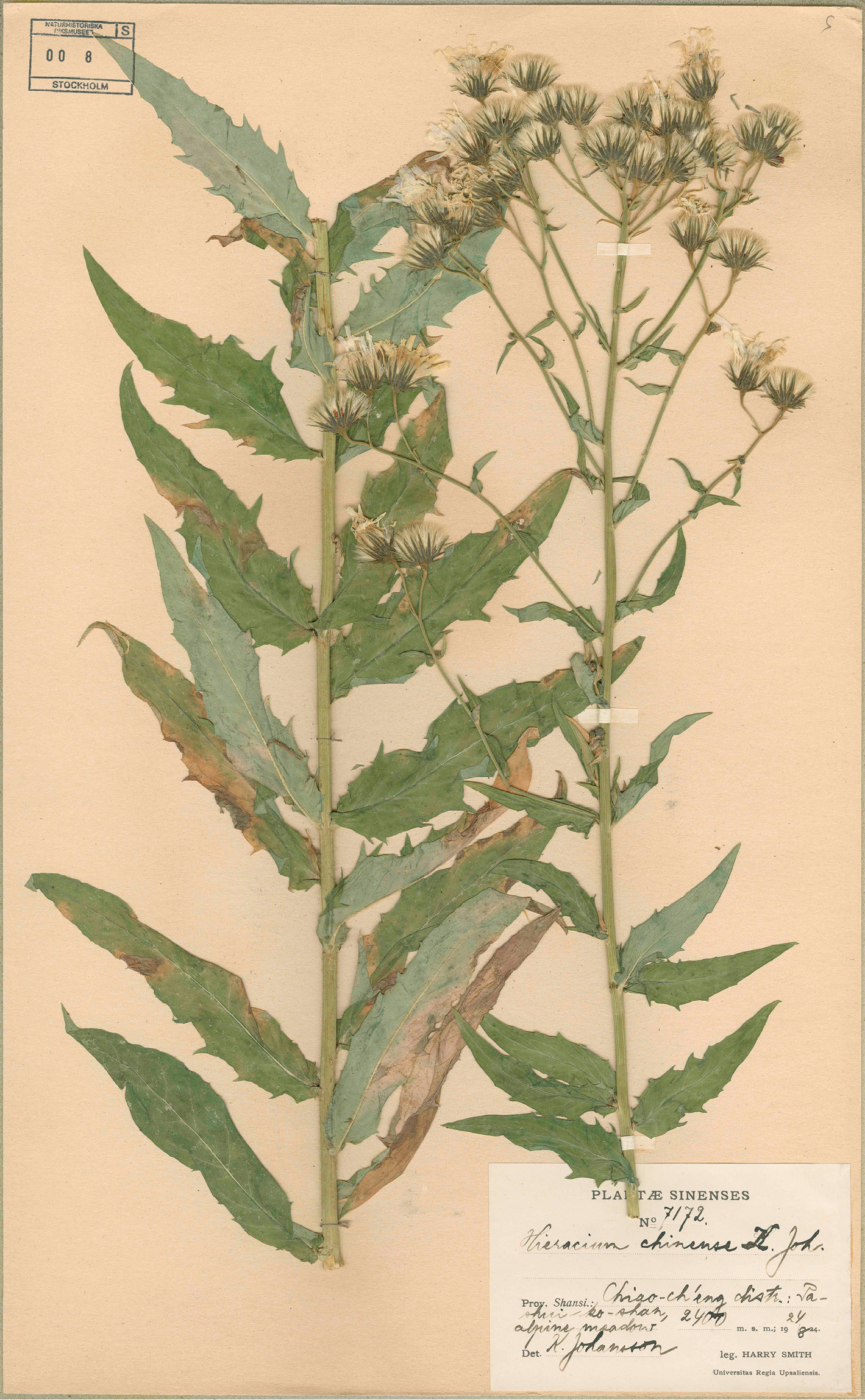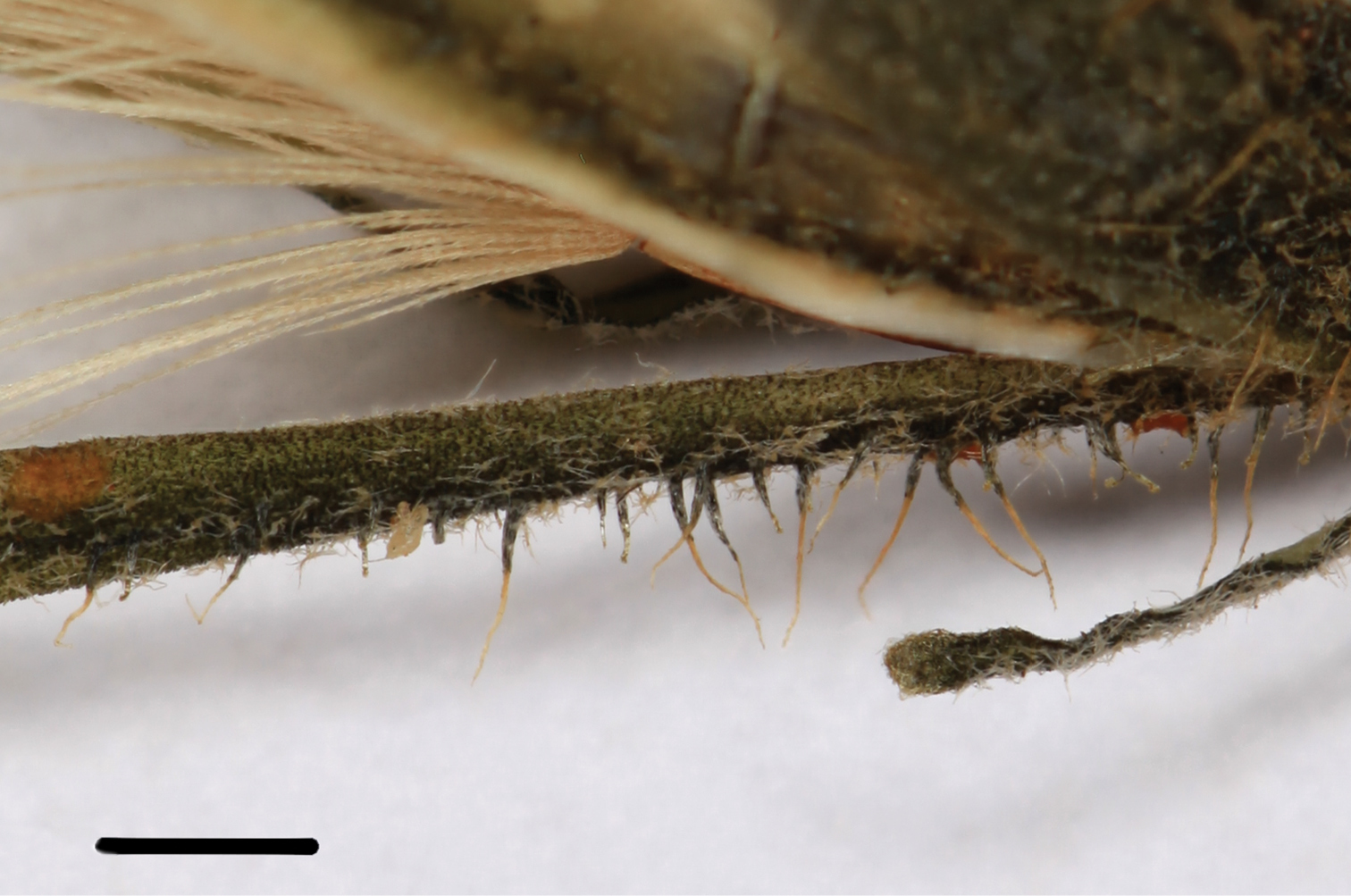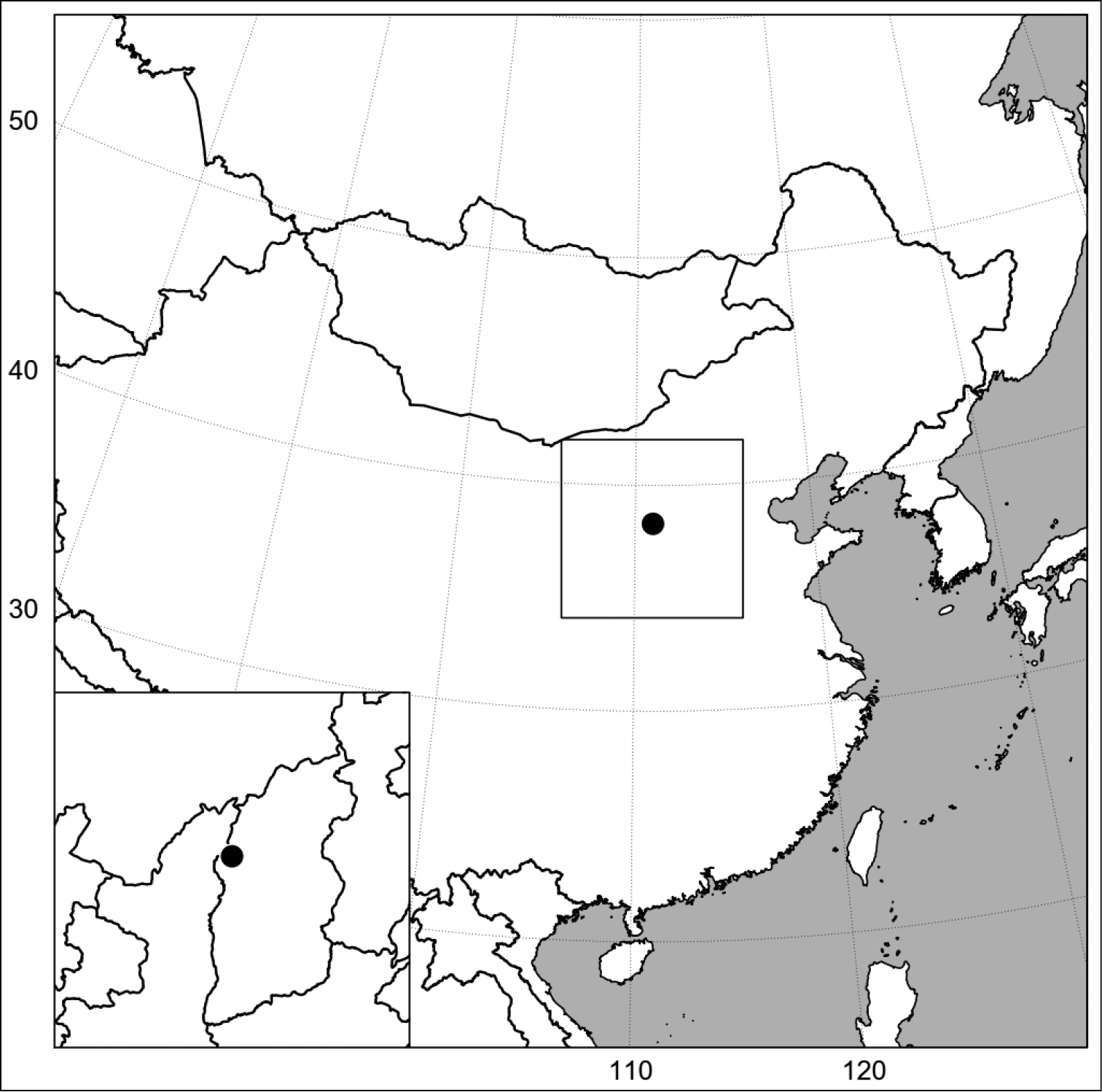






Citation: Sennikov AN (2014) Hieracium sinoaestivum (Asteraceae), a new species from North China. PhytoKeys 39: 33–40. doi: 10.3897/phytokeys.39.7788
Hieracium sinoaestivum Sennikov sp. nov. is described as new to science and illustrated. This presumably apomictic species is solely known from two old collections made in a single locality in the Shanxi Province of China. It belongs to the hybridogenous group Hieracium sect. Aestiva (Hieracium sect. Prenanthoidea × Hieracium sect. Umbellata) and is most similar to Hieracium veresczaginii from southern Siberia. The new species occurs at low altitudes in the forest belt of Lülian Mts. and belongs to taiga forest elements.
Apomictic species, boreal forest, Compositae, Shanxi, Siberia, taiga
The genus Hieracium L. with its ca. 10000 species (
In spite of the very low number of species, the genus is still quite poorly studied in China. The latest authoritative sources give different statistics. The Chinese edition of the Flora of China (
During my revision of assorted Hieracium specimens collected in Asia and kept in the Swedish Museum of Natural History, Stockholm (S), I recovered two gatherings of a plant which was recognised as a new species many years ago by the prominent Swedish Hieracium expert Karl Johansson (1856–1928). Johansson compiled a detailed species description that was attached to one of the specimens, both handwritten and in typescript, and it was obviously his death that prevented him from publication of this novelty.
This species is highly dissimilar from any species of Hieracium hitherto known from China, and therefore is here described as new to science. The species name suggested by Johansson, “Hieracium chinense Johanss.”, may not be used because of the earlier near-homonym Hieracium sinense
The new species was described solely on the basis of two dried collections kept at S. Measurements were taken with a light microscope (Leica S4E). The species description follows
Details of pubescence were photographed with a digital camera (Canon EOS 5D Mark III, lens EF 100 mm 1:2.8L, two extension rings), and the series of images was processed with the Helicon Focus Pro software.
The distribution map was produced using the R software environment for statistical computing and graphics (
China. Shanxi: Lüliang City. “Chiao-ch’eng distr., Pashui-ko-shan”, alpine meadow, 2400 ft., 24.08.1924, Harry Smith 7172 (S!, holotype; UPS, isotype). Fig. 1.
Holotype of Hieracium sinoaestivum Sennikov.
China. Shanxi: Lüliang City. “Chiao-ch’eng distr., Pashui-ko-shan”, meadows in mixed forests, 2100 ft., 28.08.1924, Harry Smith 7219 (BM 000996241 photo!, S!).
The new species differs from the most similar Hieracium veresczaginii Schischk. & Serg. mainly in a greater density of simple hairs (rare to sparse vs. solitary or sometimes absent) on the phyllaries.
Evidently aphyllopodous perennial plant. Stem 60–70 cm tall, robust, pale green, without simple hairs (paratype) or with abundant simple hairs up to 3 mm long (holotype), with lax stellate pubescence mostly in the lower half. Leaves up to 50, gradually decreasing in size upwards, sessile, clearly bicolour, intensely green on upper surface, pale green beneath, with lax stellate pubescence on both sides and simple hairs 1.5–2 mm long along margins and beneath; the lower unknown (withered at anthesis); the lamina of the median leaves (most developed) 9–12 cm long, 2.5–4 cm wide (ratio 1:3–3.5), oblong-ovate, widest near basal third, acute at apex, broadly cuneate or rotund at base, with 4–5 pairs of narrow acute teeth up to 5(8) mm long; the lamina of the upper leaves up to 6 cm long, 1.5–1.8 cm wide, ovate-lanceolate, widest near base, acute at apex, rotund at base, with 3–4 pairs of small narrow teeth. Synflorescence up to 25 cm long, laxly branched with 3–8 branches and 10–35 capitula; branches elongated, without simple and glandular hairs under the capitula, with dense stellate pubescence. Capitula cup-shaped, rounded at base. Phyllaries (Fig. 2) 9–10 mm long, 1–1.2 mm wide at middle, 1.5–1.7 mm wide at base, oblong-triangular with a gradually narrowed apex, olive green, the inner with paler margins, with simple and glandular hairs along a narrow median line and with stellate hairs over the surface; the inner with rare to sparse (5–15) simple hairs 1–1.2 mm long, dark at base, otherwise whitish, with sparse (up to 20) glandular hairs 0.2–0.5 mm long, thin and rather dark, with lax stellate pubescence, tipped with a few very short cilia at apex. Florets 15–18, 16–17 mm long. Ligules probably intensely yellow, glabrous-tipped. Styles with black spines. Achenes ca 4 mm long, brick red. Pappus 7–8 mm long, yellowish.
Pubescence on the phyllaries of Hieracium sinoaestivum Sennikov (Harry Smith 7219, S). Scale bar: 1 mm.
The new species is attributed to Hieracium sect. Aestiva (Üksip ex Schljakov) Sennikov which was circumscribed to embrace morphotypes presumably originated from crosses between members of Hieracium sect. Prenanthoidea W.D.J.Koch s.l. and Hieracium sect. Umbellata Sendtn. (
Of the presumed parents, Hieracium umbellatum is a common component of the boreal vegetation in the mountains of northern and western China (
No similar species is known from China (
Hieracium veresczaginii occurs in eastern Kazakhstan on the border with Russia (
The two original collections clearly differ from each other in the pubescence of stems and leaves, although the indumentum of phyllaries is nearly invariable. The robust and hairy plant of Harry Smith 7172 also has a much longer dentation of leaves. This difference is considered taxonomically insignificant but likely indicates genetic variability within this presumably apomictic species.
The new species is known from a single locality in the Shanxi Province of China, situated approximately at 38.3°N, 111°E in the Lüliang Mountains (Fig. 3).
Distribution of Hieracium sinoaestivum Sennikov.
This locality lies within the distribution area of Hieracium umbellatum (
According to the collector’s notes, Hieracium sinoaestivum grows on montane meadows in the forest belt at altitudes of 600–750 m a.s.l. The species flowers in August, fruits in August–September.
The only locality of the new species is situated in the subregion of North China Mountains, region of North China, subkingdom of Sino-Japanese Forest, Eastern Asiatic kingdom of Chinese phytogeographers (
Data deficient.
Not known, presumably apomictic.
The species epithet is derived from Sino-, pertaining to China, and aestivum, reflecting the sectional placement of the species.
A loan of the type collections from the Swedish Museum of Natural History (S) is gratefully acknowledged. Mats Hjertson (Uppsala) kindly sent information about the collection of Harry Smith at UPS. Ari Taponen (Helsinki) scanned the holotype specimen. Sampsa Lommi (Helsinki) produced the map. Alexander Ebel (Tomsk) provided photographs of type specimens of the Siberian Hieracium species kept in TK. The friendly criticism of Walter Lack (Berlin) and an anonymous reviewer is accepted with pleasure. Teuvo Ahti (Helsinki) kindly commented upon the final text.


